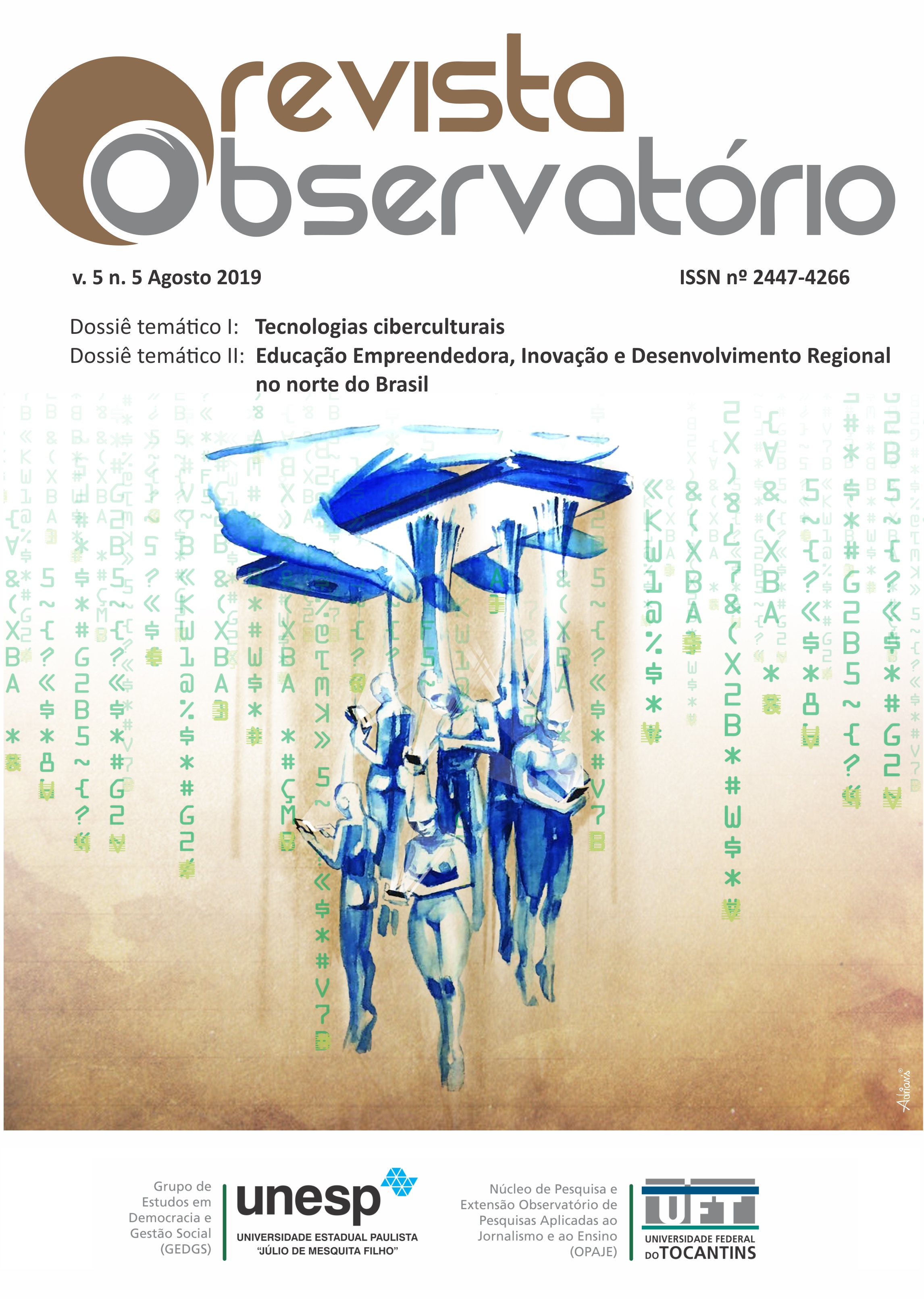UMA ANÁLISE DA IMPORTÂNCIA DAS PATENTES RELACIONADAS AO SOFTWARE
DOI:
https://doi.org/10.20873/uft.2447-4266.2019v5n5p567Keywords:
software; patentes; propriedade intelectual.Abstract
In a world increasingly competitive in terms of technologies, this research looked for companies with the highest number of patents granted in the year of 2017 by the US Patent Office (USPTO). The International Business Machines (IBM) holds the first place in the list. Furthermore, we searched for which classes the patents of IBM are mostly concentrated in 2017. As a result, it was found that more than 25% of IBM’s patents are related to classes that involve software somehow. Finally, the present work lists some positive and negative points about considering patent protection over software in Brazil.
Downloads
References
IPO. Top 300 Organizations Granted U.S. Patents in 2017. IPO, 2019. Disponível em https://www.ipo.org//wp-content/uploads/2018/06/2017_Top-300-Patent-Owners.pdf. Acesso em: 17 jun. 2019.
GRAHAM, S. J. H. e MOWERY, D.C., Intellectual Property Protection in the U.S. Software Industry. PATENTS IN THE KNOWLEDGE-BASED ECONOMY, The National Academies Press, 2003.
DELGADO, J. e RIBEIRO, C. Arquitetura de Computadores. Ed. LTC, 5 edição, 2017.
NETO, A. Garoto de 14 anos cria aplicativo e fatura cerca de R$ 100 mil por mês. 2015. Disponível em <http://g1.globo.com/jornal-da-globo/noticia/2015/05/garoto-de-14-anos-cria-aplicativo-e-fatura-cerca-de-r-100-mil-por-mes.html>. Acessado em 11/07/2019.
KLEINA, N. Inteligência artificial aprende a escrever histórias curtas de terror. 2017. Disponível em <https://www.tecmundo.com.br/software/123663-inteligencia-artificial-aprende-escrever-historias-curtas-terror.htm>. Acessado em 11/07/2019.
STREITFELD, D. Inteligência artificial começa a auxiliar no trabalho de escrita. 2018. Disponível em <https://www1.folha.uol.com.br/ilustrada/2018/11/inteligencia-artificial-comeca-a-auxiliar-no-trabalho-de-escrita.shtml>. Acessado em 11/07/2019.
MATSUURA, S. Máquinas já conseguem criar música usando inteligência artificial. 2019. Disponível em <https://oglobo.globo.com/economia/tecnologia/maquinas-ja-conseguem-criar-musica-usando-inteligencia-artificial-23441927>. Acessado em 11/07/2019
RAINER JR, R. K. e CEGIELSKI, C. Introdução a Sistemas de Informação: Apoiando e Transformando Negócios na Era da Mobilidade, edição 5, Ed. Campus, 2016.
KLEMENS, B. Math You Can't Use: Patents, Copyright, and Software. Brookings Institution Press, 2006.
BRASIL. Lei 9609, de 19 de fevereiro de 1998. Dispõe sobre a proteção da propriedade intelectual de programa de computador, sua comercialização no País, e dá outras providências. Brasília, 1998.
CHEN, Y. e CHEN B. Utilizing patent analysis to explore the cooperative competition relationship of the two LED companies: Nichia and Osram. Technological Forecasting & Social Change, 78, 294-302, 2011.
SONG, B., SEOL, H. e PARK, Y. A patent portfolio-based approach for assessing potential R&D partners: An application of the Shapley value. Technological Forecasting & Social Change, 103, 156-165, 2016.
WANG, M. Exploring potential R&D collaborators with complementary technologies: The case of biosensors. Technological Forecasting & Social Change, 79, 862–874, 2012.
NOH, H., JO, Y. LEE, S. Keyword selection and processing strategy for applying text mining to patent analysis. Expert Systems with Applications, 42 4348–4360, 2015.
Downloads
Published
How to Cite
Issue
Section
License
[PT] Autores que publicam nesta revista concordam com os seguintes termos:
1. Autores mantém os direitos autorais e concedem à revista, sem pagamento, o direito de primeira publicação, com o trabalho simultaneamente licenciado sob a Creative Commons Attribution License (CC BY-NC 4.0), permitindo o compartilhamento do trabalho com reconhecimento da autoria do trabalho e publicação inicial nesta revista.
Leia todos os termos dos direitos autorais aqui.

